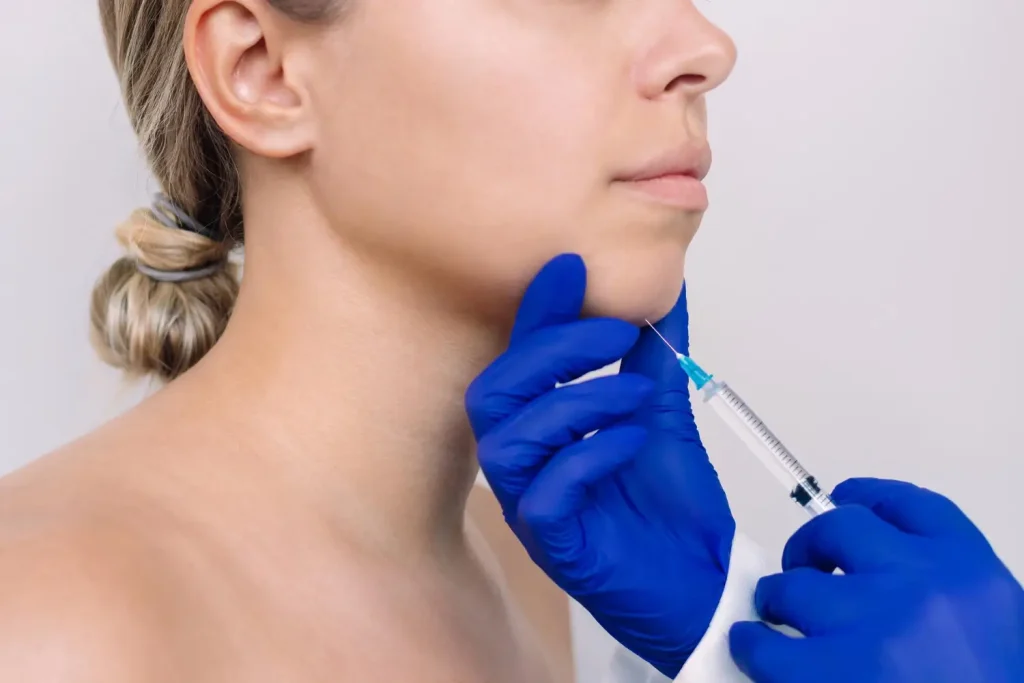Neuromodulator injections, such as botulinum toxin, have become a cornerstone in aesthetic medicine, with millions of procedures performed annually worldwide. These treatments are renowned for reducing the appearance of fine lines and wrinkles, offering a non-surgical solution for facial rejuvenation.
Nabota, a botulinum toxin type A product, has gained popularity for its efficacy and safety profile. It is used to treat various conditions, including glabellar lines, cervical dystonia, and chronic migraines. Understanding the correct reconstitution, dosing, and prescribing information is crucial for achieving optimal results and ensuring patient safety.
This article will explore Nabota’s specifics, including its reconstitution process, recommended dosages, and essential prescribing information to help practitioners effectively administer this treatment.
Key Takeaways
- Accurate dosing of Nabota is crucial for achieving optimal therapeutic outcomes in both aesthetic and medical treatments.
- Reconstitute Nabota with 0.9% sodium chloride solution, ensuring the mixture is clear and particles-free.
- Follow dosing guidelines for different beauty treatments, using the recommended units for each treatment area.
- Adhere to best practices for injection techniques, including using new sterile needles and syringes for each patient and cleaning the injection site with an alcohol swab.
About: Medical Spa RX provides medical practices with premium products at the best prices. If you’re looking to buy Nabota wholesale for your practice, the sales representatives at Medical Spa RX can give you guidance.
Reconstitution of Nabota
To mix Nabota, use a 0.9% sodium chloride solution. This makes the medicine clear and ready to work. After mixing, each dose should be measured in U/0.1 mL.
Here is how to do it:
- Gather 0.9% sodium chloride solution.
- Use this solution as the diluent to mix with Nabota.
- For each dose, measure the correct amount of sodium chloride solution.
- Add the measured sodium chloride solution to the Nabota vial.
- Mix gently to avoid foam or bubbles.
- Ensure the mixture is precise and has no particles.
- Once mixed, store it in a fridge at 2-8°C.
- Use the solution within 24 hours.
Dosing Guidelines for Aesthetic Treatments

Nabota, a botulinum toxin type A product, is used for various aesthetic treatments. Here are the recommended dosages for some common indications:
- Glabellar Lines: Administer 4 units/0.1 ml at each of the 5 injection sites (2 in each corrugator muscle and 1 in the procerus muscle), totaling 20 units.
- Forehead Lines: Typically, 10-20 units are injected across the forehead, depending on the severity and muscle mass.
- Crow’s Feet: Inject 4 units/0.1 ml at each of the 3 sites per side, totaling 12 units per side.
- Bunny Lines: 4-6 units are usually sufficient, divided between both sides of the nose.
- Masseter Reduction: 25-50 units per side, depending on the muscle size and desired outcome.
Injection Techniques and Best Practices
To achieve optimal results and minimize complications, follow these best practices:
- Preparation: Ensure the Nabota solution is properly reconstituted and stored. Use a sterile technique to avoid contamination.
- Injection Sites: Identify and mark the precise injection sites based on the patient’s anatomy and desired outcomes. To prevent ptosis, avoid injecting near sensitive areas like the levator palpebrae superioris.
- Technique: Use a fine-gauge needle (30-32 gauge) for injections. Insert the needle at a 90-degree angle for superficial muscles and at a 45-degree angle for deeper muscles.
- Dosage Control: Start with the lowest recommended dose and adjust based on the patient’s response and muscle mass. Avoid exceeding the maximum cumulative dose of 360 units within a 3-month interval.
- Post-Injection Care: Advise patients to avoid rubbing or massaging the treated areas for at least 24 hours to prevent the toxin from spreading to unintended muscles.
Dosing Guidelines for Medical Conditions
Nabota is commonly used to treat medical conditions such as cervical dystonia and spasticity.
- For cervical dystonia, the recommended dose typically ranges from 120 to 240 units, administered intramuscularly into the affected muscles.
- The dosage for spasticity can vary significantly based on the severity and specific muscles involved, often ranging from 200 to 400 units.
Additionally, proper injection techniques, such as targeting specific muscle groups and dividing doses evenly, are crucial for ensuring both efficacy and safety. Monitoring patient response and tailoring treatment plans based on individual needs is essential for achieving optimal results while minimizing risks.
Side Effects and Contraindications
Patients might feel pain where Nabota was injected, get headaches, or feel tired. Some might also have eye problems, such as blurry vision, dry eyes, or drooping eyelids.
Doctors should not use Nabota in patients allergic to botulinum toxin type A or any other part of this medicine. It is a crucial safety rule. Also, care must be taken with patients with nerve or muscle problems.
People with infections near the planned injection site should wait until they are better before receiving Nabota injections. Safety and efficacy are top priorities, making it essential to choose patients wisely for treatment. Carefully following standards like this allows Nabota FDA approval to be maintained.
Practical Tips for Administration
Administering Nabota requires attention to detail and precision. Here are critical steps for safe and effective use:
- Proper Reconstitution: Reconstitute Nabota with 0.9% sodium chloride solution. Ensure the solution is clear and free of particles before use.
- Dosage Accuracy: Follow indication-specific dosage recommendations. For example, for glabellar lines, administer 4 units/0.1 ml at each of the five sites.
- Injection Technique: Use a fine-gauge needle and inject intramuscularly. Avoid injecting near the levator palpebrae superioris to prevent ptosis.
- Single-Use Only: Nabota is for single-use only. Discard any unused solution to prevent contamination.
- Storage: Store reconstituted Nabota in a refrigerator and use within 24 hours. Do not freeze.
Posttreatment Care and Patient Education
- Immediate Aftercare: Advise patients to avoid rubbing or massaging the treated areas for at least 24 hours to prevent the spread of the toxin.
- Activity Restrictions: For 24 hours after treatment, patients should avoid strenuous activities, alcohol consumption, and exposure to extreme temperatures.
- Monitoring for Side Effects: Educate patients about potential side effects such as localized pain, tenderness, or bruising at the injection site. Instruct them to report any severe or unusual symptoms immediately.
- Follow-Up: Schedule a follow-up appointment to assess the treatment’s effectiveness and address any concerns the patient may have.
Conclusion
Nabota’s versatility in aesthetic and medical applications has made it a valuable tool in clinical practice. Correct reconstitution, precise dosing, and understanding patient-specific factors are vital to achieving successful outcomes while minimizing side effects.
Whether used to smooth wrinkles or treat complex medical conditions, Nabota offers consistent and reliable results when administered by a skilled practitioner.
FAQs
1. How long do the effects of Nabota last?
Depending on the treatment area and individual patient factors, the effects typically last between 3-6 months.
2. Can Nabota be used for both aesthetic and medical purposes?
Nabota is used to treat dynamic wrinkles in aesthetic applications and conditions like cervical dystonia, spasticity, and chronic migraines in medical settings.
3. What is the ideal reconstitution ratio for Nabota?
The ideal reconstitution ratio depends on the desired concentration. Common options are 2.5 mL, 1.25 mL, or 1 mL of saline per 100-unit vial.
References
Song, S., Lee, Y. H., Hong, J. P., & Oh, T. S. (2018). Safety, efficacy, and onset of a novel botulinum toxin type A (Nabota) for the treatment of glabellar frown lines: a single-arm, prospective, phase 4 clinical study. Archives of craniofacial surgery, 19(3), 168–174. https://doi.org/10.7181/acfs.2018.01886
Kim DY, Kim JM. Safety and efficacy of PrabotulinumtoxinA (Nabota®) injection for cervical and shoulder girdle myofascial pain syndrome: a pilot study. Toxins. 2018;10(9):355. doi:10.3390/toxins10090355



















